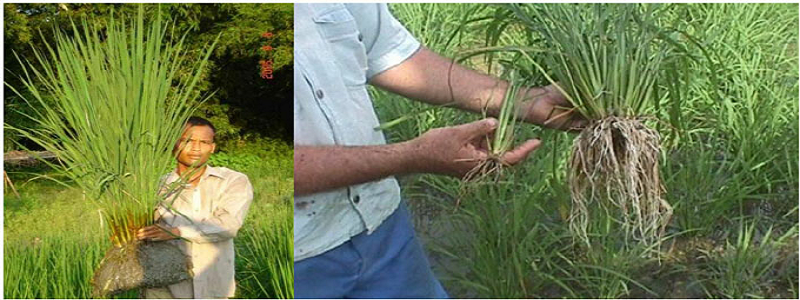The System of Rice Intensification (SRI) used to be advanced in Madagascar through Henri de Laulanie, in the 1980s. He labored with Malagasy farmers and associates to support the chances of rice production. The follow contributes to both fitter soil and more fit plants, supported by means of better root growth and the nurturing of soil microbial abundance and diversity. It is in line with quite a lot of well-founded agroecological principles. SRI concepts and practices have additionally been effectively adapted to upland rice. SRI comes to transplanting very young rice seedlings (normally eight-12 days outdated with just two small leaves) carefully and briefly to be able to purpose minimal disturbance to the roots.
[woo_product_slider id=”64262″]
The seedlings are planted individually, in contrast to the traditional way the place clumps of 3-four are planted together, minimising root competition between the seedlings. The seedlings are saved widely spaced to allow better root and cover growth, in a square grid development at a spacing of a minimum of 25 x 25 cm. Planting will also be carried out even wider at 30 x 30 or 40 x 40 cm or even up to 50 x 50 cm in the most efficient quality soils.
The System of Rice Intensification (SRI), used to be first employed outside Madagascar in 2000, has since developed when peasant farmers additional evolved the device relying on their location’s local weather. Some of the world’s largest governments and meals firms are also growing rice following the SRI rules as it additionally greatly reduces emissions of the methane, a formidable greenhouse gasoline, that escapes when rice or any other crop remains waterlogged for weeks at a time.
Methane is 30 occasions more powerful than carbon dioxide as a greenhouse gasoline and rice releases as much as 1.five% of the sector’s total greenhouse gasoline emissions.
With the inhabitants in southeast Asia expected to develop in the subsequent 20 years, methane discharge from rice growing could building up via 30 percent or extra. The alliance of businesses, NGOs, and governments that use the SRI concept sets the world’s first voluntary sustainability standards for rice rising. They adopt the basic SRI rules of planting seedlings further aside through holding them moist rather than flooded, and provides objectives or measurements to supply consistency.


